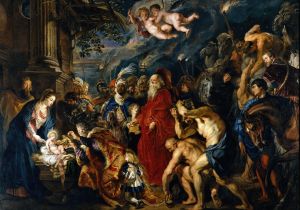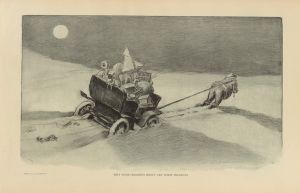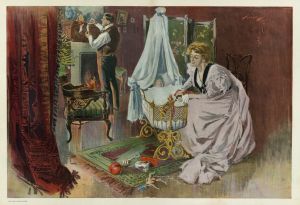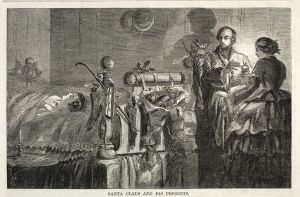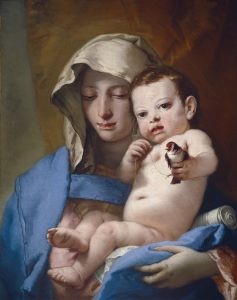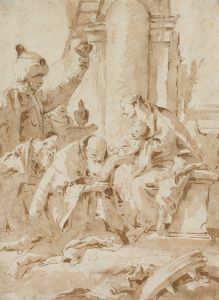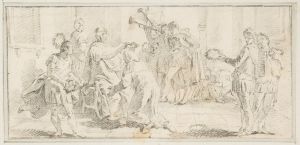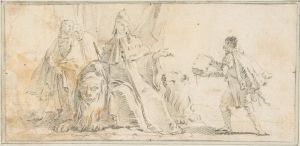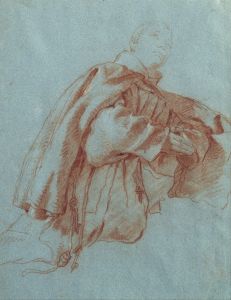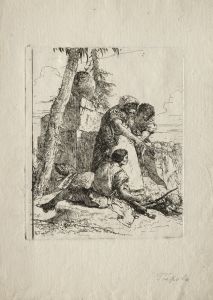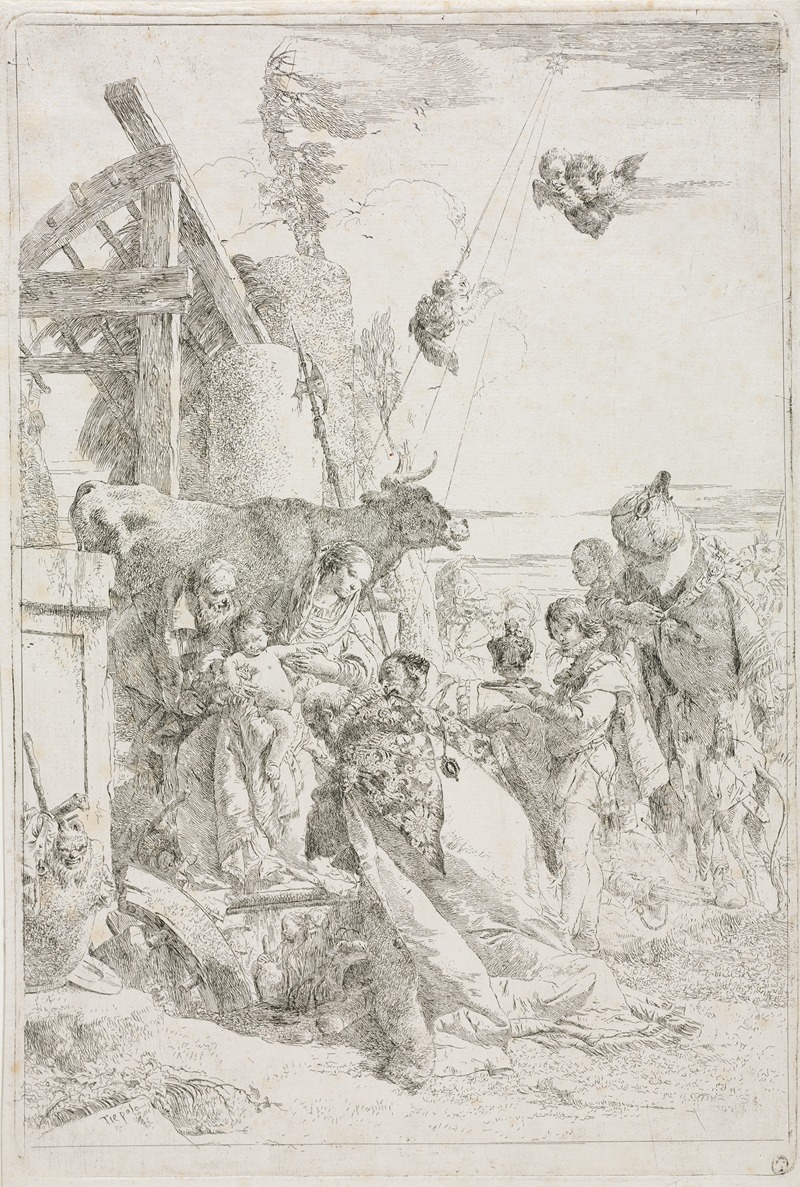
Adoration of the Magi
A hand-painted replica of Giovanni Battista Tiepolo’s masterpiece Adoration of the Magi, meticulously crafted by professional artists to capture the true essence of the original. Each piece is created with museum-quality canvas and rare mineral pigments, carefully painted by experienced artists with delicate brushstrokes and rich, layered colors to perfectly recreate the texture of the original artwork. Unlike machine-printed reproductions, this hand-painted version brings the painting to life, infused with the artist’s emotions and skill in every stroke. Whether for personal collection or home decoration, it instantly elevates the artistic atmosphere of any space.
Giovanni Battista Tiepolo's "Adoration of the Magi" is a remarkable example of the Venetian painter's masterful approach to religious themes, characterized by his dynamic compositions and luminous color palette. Tiepolo, one of the most prominent artists of the 18th century, was known for his ability to infuse traditional religious subjects with a sense of drama and grandeur, and this painting is no exception.
The "Adoration of the Magi" depicts the biblical scene where the Three Wise Men, or Magi, visit the infant Jesus after his birth, bringing gifts of gold, frankincense, and myrrh. This event is celebrated in the Christian tradition as the Epiphany, symbolizing the revelation of Christ to the Gentiles. Tiepolo's interpretation of this scene is both vibrant and theatrical, capturing the moment with a sense of movement and reverence.
In the painting, the Virgin Mary is typically depicted seated, holding the Christ Child, who is the focal point of the composition. The Magi, often portrayed in rich, flowing garments, approach with gifts, their expressions a mix of awe and devotion. Tiepolo's use of light is particularly noteworthy; he employs it to highlight the figures and create a sense of divine illumination, a technique that enhances the spiritual significance of the scene.
Tiepolo's style is characterized by his use of bright, airy colors and fluid brushwork, which are evident in the "Adoration of the Magi." The composition is carefully balanced, with a dynamic arrangement of figures that guide the viewer's eye towards the central figure of the Christ Child. The background often features architectural elements or a landscape that provides depth and context to the scene.
Giovanni Battista Tiepolo was born in Venice in 1696 and became one of the leading painters of the Venetian school. His work was highly sought after, and he received commissions from all over Europe, including Spain and Germany. Tiepolo's ability to convey complex religious narratives with clarity and emotion made him a favorite among patrons and the church.
The "Adoration of the Magi" reflects Tiepolo's deep understanding of religious iconography and his ability to translate it into a visual language that was both accessible and profound. His paintings are celebrated for their ability to capture the essence of the divine while remaining grounded in the human experience.
While specific details about the commission or the exact date of creation for this particular painting may not be well-documented, Tiepolo's body of work, including the "Adoration of the Magi," continues to be studied and admired for its artistic and historical significance. His influence on the development of European art is undeniable, and his works remain a testament to the enduring power of religious art to inspire and move audiences.
Overall, Giovanni Battista Tiepolo's "Adoration of the Magi" stands as a significant contribution to the canon of religious art, exemplifying the artist's skill in combining narrative, emotion, and technical prowess to create a work that resonates with viewers across centuries.






